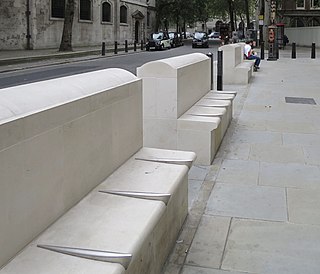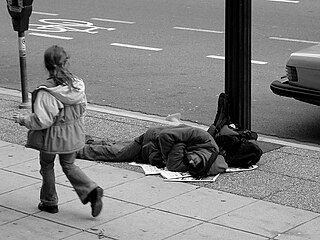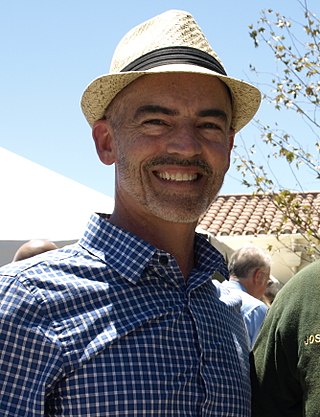
In the United States, the number of homeless people on a given night in January 2022 was 582,462 according to the Department of Housing and Urban Development. Annual federal HUD reports contradict private state and local reports where homelessness is shown to have increased each year since 2014 across several major American cities, with 40 percent increases noted in 2017 and in 2019.

Homeless shelters are a type of homeless service agency which provide temporary residence for homeless individuals and families. Shelters exist to provide residents with safety and protection from exposure to the weather while simultaneously reducing the environmental impact on the community. They are similar to, but distinguishable from, various types of emergency shelters, which are typically operated for specific circumstances and populations—fleeing natural disasters or abusive social circumstances. Extreme weather conditions create problems similar to disaster management scenarios, and are handled with warming centers, which typically operate for short durations during adverse weather.

Out of 10,000 female individuals 13 are homeless. Although studies reflect that there are many differences among women suffering homelessness and there is no universal experience, the average homeless woman is 35 years old, has children, is a member of a minority community, and has experienced homelessness more than once in their lifetime.

Skid Row is a neighborhood in Downtown Los Angeles. The area is officially known as Central City East.

Discrimination against homeless people is the act of treating unhoused people or people perceived to be unhoused unfavorably. As with most types of discrimination, it can manifest in numerous forms.

Anti-homelessness legislation can take two forms: legislation that aims to help and re-house homeless people; and legislation that is intended to send homeless people to homeless shelters compulsorily, or to criminalize homelessness and begging.

Delta Park is a public municipal park complex in north Portland in the U.S. state of Oregon. Delta Park is composed of two distinct sections referred to as East and West Delta Park. The Owens Sports Complex is a notable attraction of East Delta Park, bringing teams from across the West Coast to compete in an array of sports. For local Oregonians, homelessness and a past Proud Boys rally distinguish East Delta Park and the Owens Sports Complex from other parks in the Portland area.
In the United States, a sit-lie ordinance is a municipal ordinance which prohibits sitting or lying on the sidewalk or in other public spaces.
The Homeless Bill of Rights refers to legislation protecting the civil and human rights of homeless people. These laws affirm that homeless people have equal rights to medical care, free speech, free movement, voting, opportunities for employment, and privacy. Legislation of this type is currently being debated at the state level in the United States. Over 120 organizations in five different states have shown public support for a Homeless Bill of Rights and are working towards its implementation. A Homeless Bill of Rights has become law in Rhode Island, Connecticut and Illinois and is under consideration by several other U.S. states, including California, Delaware, Minnesota, Missouri, Oregon, Tennessee, and Vermont.

Mitch O'Farrell is an American politician, who served as a member of the Los Angeles City Council for the 13th district from 2013 to 2022, during which he spent eight days as President of the City Council during the 2022 Los Angeles City Council scandal. A member of the Democratic Party, O'Farrell was the first Native American elected to the body, and was one of its two openly gay members until the end of his second term in 2022.

The San Francisco Bay Area comprises nine northern California counties and contains four of the ten most expensive counties in the United States. Strong economic growth has created hundreds of thousands of new jobs, but coupled with severe restrictions on building new housing units, it has resulted in an extreme housing shortage which has driven rents to extremely high levels. The Sacramento Bee notes that large cities like San Francisco and Los Angeles both attribute their recent increases in homeless people to the housing shortage, with the result that homelessness in California overall has increased by 15% from 2015 to 2017. In September 2019, the Council of Economic Advisers released a report in which they stated that deregulation of the housing markets would reduce homelessness in some of the most constrained markets by estimates of 54% in San Francisco, 40 percent in Los Angeles, and 38 percent in San Diego, because rents would fall by 55 percent, 41 percent, and 39 percent respectively. In San Francisco, a minimum wage worker would have to work approximately 4.7 full-time jobs to be able to spend less than 30% of their income on renting a two-bedroom apartment.

According to the United States Interagency Council on Homelessness, as of January 2017, there are an estimated 32,190 homeless individuals in Florida. Of this high number, 2,846 are family households, 2,019 are unaccompanied young adults, 2,817 are veterans, and an estimated 5,615 are individuals experiencing chronic homelessness. According to a January 2020 count, this figure was 27,487 on any given day, a decrease from previous years. According to the U.S. Department of Housing and Urban Development, as of December 2022, the estimate for homeless individuals has dropped to 25,959, about 5% of the total U.S. population. This is in spite of fears that moratorium's on evictions ending could lead to an increase in the homeless population.

Homelessness in the United States has occurred to varying degrees across the country. The total number of homeless people in the United States fluctuates and constantly changes hence a comprehensive figure encompassing the entire nation is not issued since counts from independent shelter providers and statistics managed by the United States Department of Housing and Urban Development vary greatly. Federal HUD counts hover annually at around 500,000 people. Point-in-time counts are also vague measures of homeless populations and are not a precise and definitive indicator for the total number of cases, which may differ in both directions up or down. The most recent figure for the year 2019 that was given was at 567,715 individuals across the country that have experienced homelessness at a point in time during this period.

The United States Department of Housing and Urban Development estimated that more than 171,500 people were homeless in California in January 2022. This represents 30% of the homeless population of the United States even though California has slightly less than 12% of the country's total population, and is the highest per capita rate in the nation, with 0.44% of residents being homeless. More than two-thirds of homeless people in California are unsheltered, which is the highest percentage of any state in the United States. Half of the unsheltered homeless people in the United States live in California: about 115,500 people, which is nine times as many as the state with the second highest total. Even those who are sheltered are so insecurely, with 90% of homeless adults in California reporting that they spent at least one night unsheltered in the past six months.
In September 2021, an average of 47,916 people slept in New York City's homeless shelters each night. This included 18,236 single adults, 14,946 children, and 14,734 adults in families. The total number peaked in November 2018, with 63,636 people sleeping in homeless shelters. Since March 2020, the number of people sleeping in shelters has declined significantly, likely an effect of the COVID-19 pandemic. The city reported that in 2019, 3,600 individuals experienced unsheltered homelessness, sleeping in public spaces such as streets and public transit rather than shelters. The homeless population has surged in New York City 18% in 2023 from 2022, despite efforts from Mayor Adams.

Nithya V. Raman is an American urban planner, activist, and politician serving as the Los Angeles City Councilmember for the 4th District since 2020. Raman, a member of the Democratic Party and the Democratic Socialists of America, defeated incumbent Councilmember David Ryu in 2020.

The U.S. city of Minneapolis featured officially and unofficially designated camp sites in city parks for people experiencing homelessness that operated from June 10, 2020, to January 7, 2021. The emergence of encampments on public property in Minneapolis was the result of pervasive homelessness, mitigations measures related to the COVID-19 pandemic in Minnesota, local unrest after the murder of George Floyd, and local policies that permitted encampments. At its peak in the summer of 2020, there were thousands of people camping at dozens of park sites across the city. Many of the encampment residents came from outside of Minneapolis to live in the parks. By the end of the permit experiment, four people had died in the city's park encampments, including the city's first homicide victim of 2021, who was stabbed to death inside a tent at Minnehaha Park on January 3, 2021.
Mass and Cass, also known as Methadone Mile or Recovery Road, is a tent city in Boston, Massachusetts located at and around the intersection of Melnea Cass Boulevard and Massachusetts Avenue. It is located in the area of Newmarket, an industrial part of Boston that includes some of Dorchester, South Boston, Roxbury, Boston, and the South End.
The COVID-19 pandemic made homelessness in Toronto more visible, due to the rise of encampments in public parks. However, homelessness in Canada had been an issue of widespread concern long before the pandemic's arrival. A 2016 report found that at least 235,000 Canadians experience homelessness in a year, and 35,000 Canadians experience it on a given night. A Nanos survey found in 2020 that 72% of Canadians believed it was urgent to work toward ending homelessness in Canada. A 2020 report from the Wellesley Institute argues that there were disproportionately higher rates of evictions in Black neighborhoods, and that Black residents were among the worst hit by COVID-19. As part of its stay at home order in March 2020, the Ontario government instated a ban on evictions, however this was lifted with the emergency order in June 2020. The Ontario government however made evictions easier, according to some critics, due to its passage of Bill 184 which allowed landlords to bypass the Landlord and Tenant Board. One advocacy group deemed the cascading effects of Bill 184 'a bloodbath of evictions'. By December 2020, Toronto tenants were calling for a reinstatement of the moratorium on evictions. The crisis conditions of the pandemic lead to an increase in organizing against what many homelessness advocates deemed to be social murder of the city's unhoused. This ranged from legal lawsuits against the city's shelter system to calls for a city plan that would address the large numbers of unhoused people camping outside, to suits against encampment evictions, to large scale protests against the clearings of public parks. The Covid-19 encampments are best understood as emerging out of a longer history of urban informality in Toronto.













